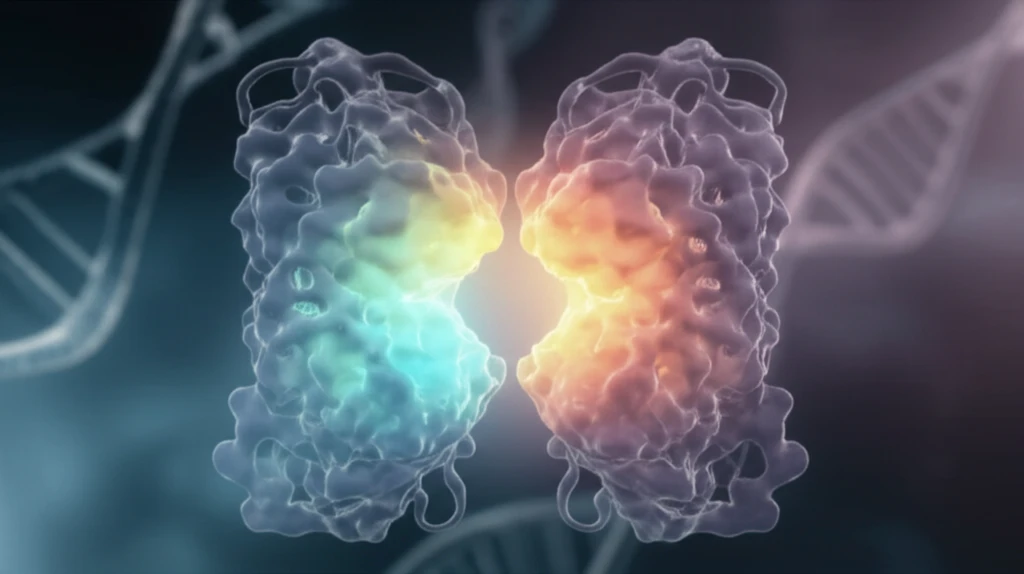
Symmetry's Secret Twist: Unlocking the Mysteries of Asymmetric Proteins
"Delve into the hidden world of asymmetric homodimers and their crucial role in biological processes."
For a long time, scientists thought of most proteins as perfectly symmetrical. Think of it like building with identical Lego bricks – you snap two identical pieces together, and you expect a mirror image. However, nature often throws a curveball, and in the world of proteins, this curveball is asymmetry.
Asymmetry in proteins, particularly in homodimers (proteins made of two identical subunits), is a departure from this expected symmetry. Instead of a perfect mirror image, you get a slight twist, a subtle difference that can have profound effects on how the protein functions. This article dives into this hidden world of asymmetric proteins, showing why it matters and what secrets it holds for future discoveries.
Drawing upon a groundbreaking study titled "Extent of Structural Asymmetry in Homodimeric Proteins: Prevalence and Relevance," we will unpack how asymmetry arises in these molecular structures, what roles it plays in key biological processes, and why understanding it is vital for advancements in medicine and biotechnology.
Why Protein Asymmetry Matters

Before diving into the specifics, it’s crucial to understand why protein asymmetry is significant. Asymmetry provides a means to achieve highly specific interactions. Instead of two identical binding sites, an asymmetric homodimer might have one highly active site and another less active, or even inactive, site. This 2:1 binding ratio can be crucial in regulating complex cellular processes.
- Precise Control: Asymmetry fine-tunes cellular processes with specific interactions.
- Nuanced Signals: Allows cells to respond to stimuli in a balanced manner.
- Disease Prevention: Prevents the formation of harmful protein aggregates, crucial for avoiding conditions like prion diseases.
The Future of Asymmetry Research
As we continue to unravel the mysteries of protein asymmetry, the implications for drug development and biotechnology are immense. By understanding how to manipulate asymmetry, scientists can design drugs that target specific protein interactions with unprecedented precision. This could lead to more effective treatments for a wide range of diseases, from cancer to neurological disorders. Unlocking the secrets of asymmetry opens new doors to understanding the intricate mechanisms of life and paves the way for groundbreaking innovations.
